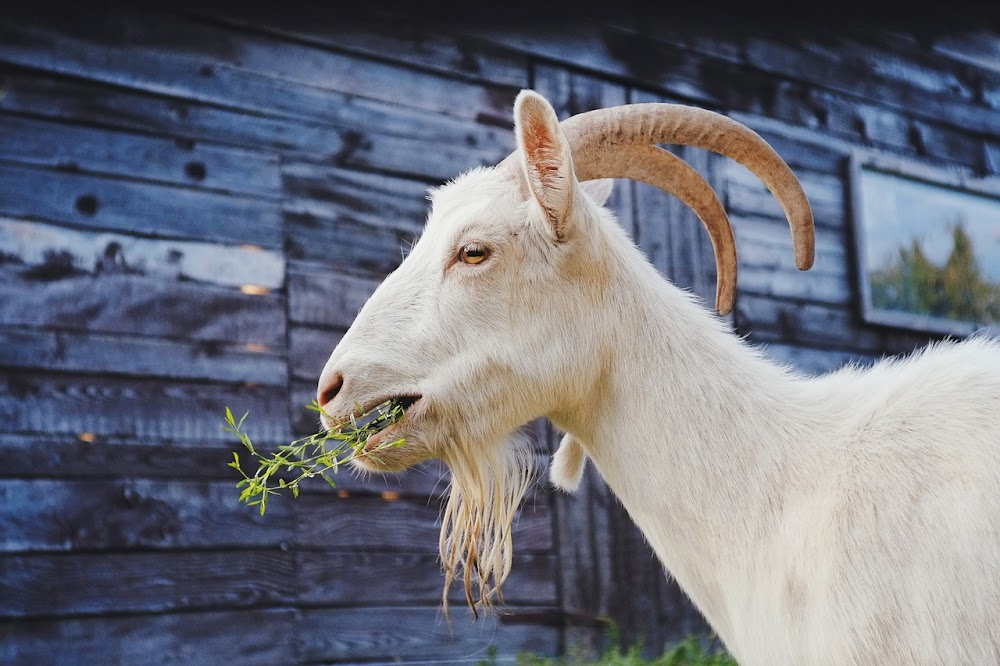
10 Best Goat Breeds for Small Farms
When we first decided to get goats it was so our kids could do 4H. At the time we were following a few vlogs on YouTube and they had small goats and it really sparked my interests as well as my family’s.
Our favorite vlog with goats is definitely Weed’em and Reap. Danelle from the Weed’em and Reap raises Nigerian Dwarf goats. I really liked the size of these goats.
I joined a local goat Facebook group and started asking lots of questions and exploring which goat breed would be a good fit for our small homestead. Again and again, I kept coming back to Nigerian Dwarfs.
We lucked out when it was time to purchase goats. I saw a Facebook post on a local goat group for 2 free goats. The owner wanted them to go to a 4H family just starting out. It was like the Universe was aligned just for us.
So we brought home 1 Nigerian dwarf goat and 1 Mini Nubian. After 4 years of owning goats, I still prefer these two breeds because of their size and the taste of their milk. I love making goat cheese.
What Breed Should You Get?
When deciding to add goats to your farm there are a few things to consider.
Will the goats be used as pets, land clearing, for milking, or raised for meat?
How much space do you need for goats?
Theses are the basic questions you need to answer to determine which breed is best for your small farm.
Dual Purpose Breeds
Honestly, any goat can be a meat goat even a dairy goat. Meat goat breeds are just built to provide more meat. But not all meat goats make good dairy goats. For example, I have a good friend that has Boer goats and I tried her goats’ milk and it tastes different than my goats’ milk. It’s not as creamy or sweet. The percentage of butterfat is different. Many times the milk butterfat percentage is lower in meat goats milk than it is in dairy goat breeds.
Top 5 Dairy Breeds for Small Farms
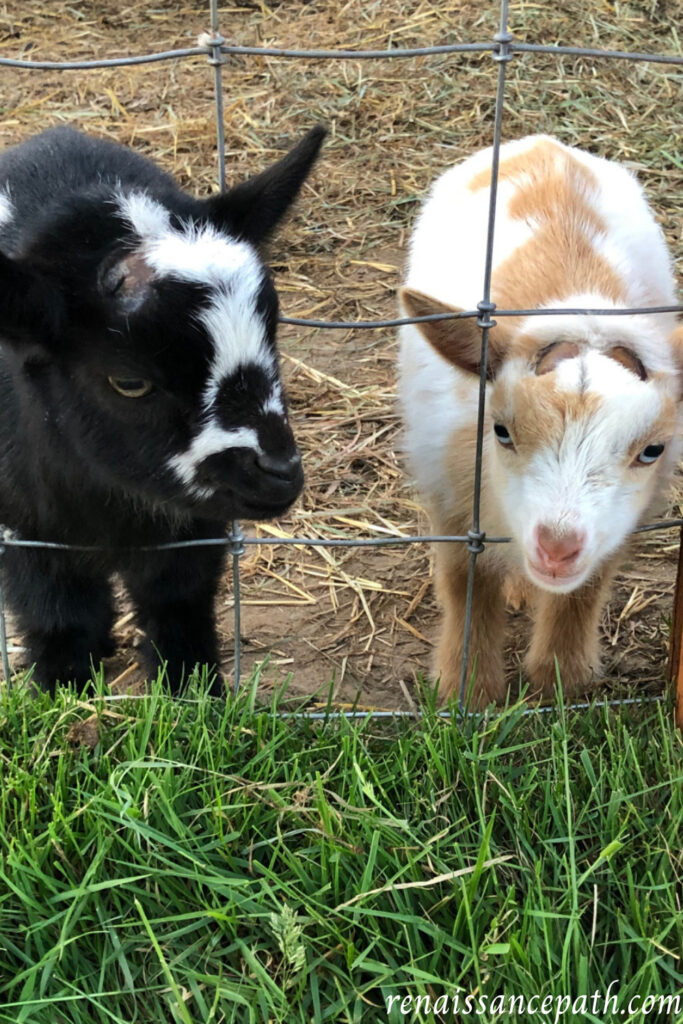
Nigerian Dwarf is considered a miniature dairy goat breed. The Nigerian Dwarf goat is from West Africa. They have become a very popular breed due to their small size. Not only do they make good pets they are great little dairy goats and make delicious milk.
Size of Nigerian Dwarf goats – The does stand 17 to 19 inches and the bucks stand 19 to 20 inches. The ideal weight is around 75 pounds. Because they are smaller I can lift these goats myself. They fit easily in the back seat of a car or a small SUV. They can also fit in a large or x-large dog crate.
A doe in milk can produce up to 1/2 gallon per day during peak production. Nigerian Dwarfs have the highest milk butterfat percentage ranging 6-10%
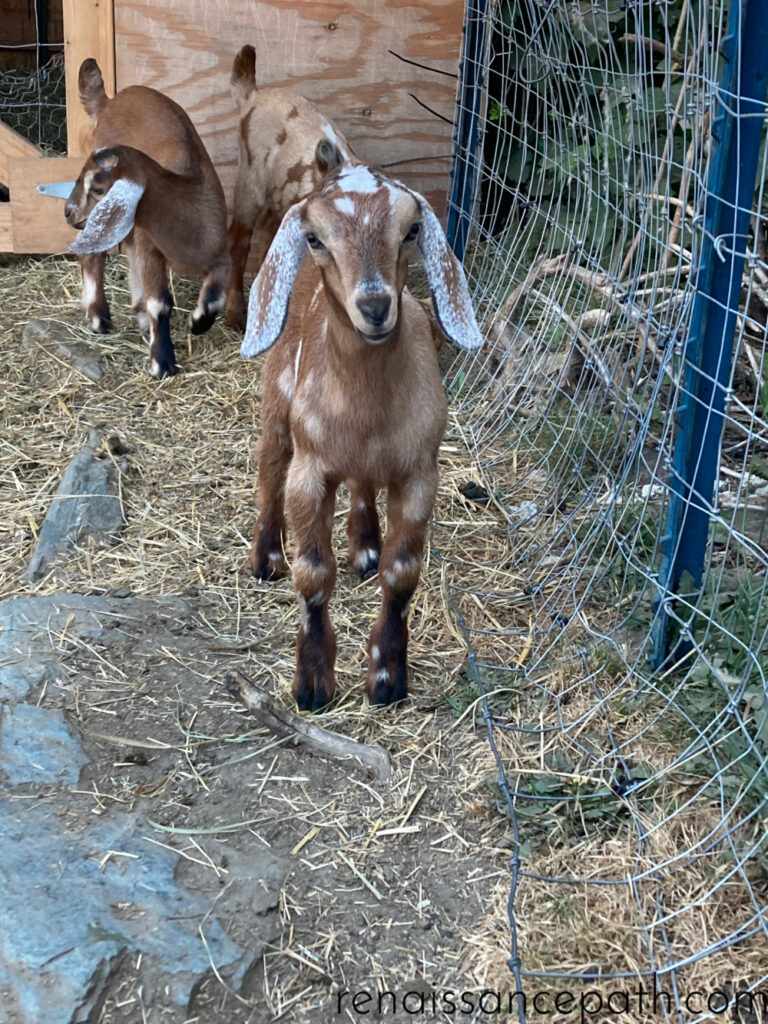
Mini Nubian is a mid-sized dairy breed that is a cross between a standard Nubian Doe and a Nigerian Dwarf Buck. This is one of the breeds we have on our small homestead.
Does stand 23-29″ tall and up to 31″ for bucks. Weight is 100 pounds for does and bucks can weigh 135 pounds. Their size is still small enough that I can handle a doe.
One of the reasons I was very interested in Mini Nubians was they can produce as much milk as standard-sized Nubians but on half the feed. Very cost-effective I’d say. Their teat size is a little bit bigger than a Nigerian Dwarf goat this makes them easier to milk. They produce around 1/2 gallon to a gallon per day during peak production. The milk butterfat percentage is usually around 5% but can be higher because they are mixed with Nigerian Dwarf.
Mini La Mancha is another mid-sized dairy goat. They are created by taking a full-size La Mancha Doe and breeding her to a Nigerian Dwarf Buck. Their size is similar to the Mini Nubian. Mini La Manchas weigh around 90-130 pounds. Ideal size range in does: 24-26 inches. Ideal size range in bucks: 24-28 inches.
Mini La Manchas produce around 1/2 to 3/4 gallons of milk a day at peak production. Average milk butterfat percentage of 3-4% but could be a little higher or lower depending on the milk lines of the doe and buck.
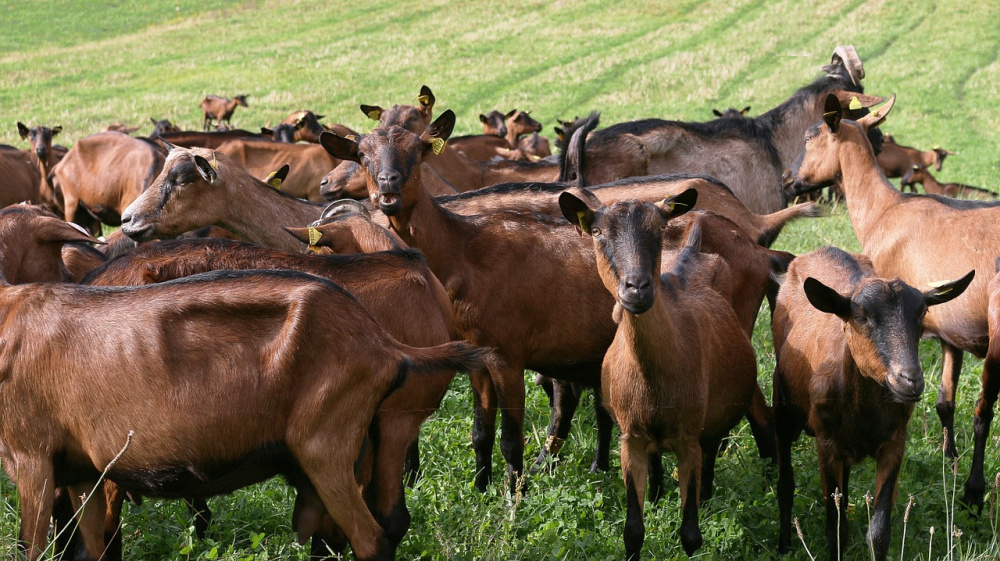
Oberhasli is a Swiss mountain goat. They are a medium-sized goat. Oberhasli goats are recognizable for their unique black and tan coats which are known as chamoisee.
Oberhasli is mostly used as a dairy goat and is suitable for commercial dairy farms. This breed has become very popular amongst those with small farms or homesteads.
Oberhasli average weight is 100 to 150. Does have average heights of 28 to 32 inches and Bucks averaging 30 to 34 inches. Milk production daily is 1/2 gallon to 1 1/2 gallon depending on how many times the doe has freshened. Average milk butterfat percentage is 3.4%
Kinder is a medium-sized goat. The breed was originated from a cross between a Pygmy goat and a Nubian goat. It was developed at Zederkamm Farm in Snohomish, Washington, United States.
What makes Kinder goats so great? Kinder goats are considered dual purpose goats, meaning they are good for meat as well as dairy. Even though they are small they still provide a good amount of meat. They have a higher milk butterfat percentage which is great for cheesemaking. This is why they are prized amongst cheesemakers.
Kinder Does average 115 pounds and bucks about 135. The average Kinder doe is between 23-25” and the average buck between 24-26”. The size can vary depending on genetics.
Kinders are docile kind goats and make wonderful pets for 4H and FFA. Very easy for kids to handle.
According to the KGBA, the 2020 butterfat average for Kinders on milk test was 6.2%. Kinder Goat Breeders Association trademarks the Kinder breed.
Top 5 Meat Goat Breeds for Small Farms
Many of the goats mentioned can get quite large but that doesn’t mean you have to let them get that big. Many farmers/homesteaders butcher their animals by 1 year of age this way they don’t have to continue paying for feed and hay.
Goat meat is one of the most consumed red meats globally at around 65%. Goat meat from adult goats is called Chevon in the United States. In other countries like Spain or Portugal meat from young milk-fed goats is called cabrito. In Italy it is called capretto. Goat meat is a lean red meat and has a slightly sweet flavor, adult goat meat is said to have a bit of gamey flavor to it.
When you have a small farm or homestead you might not have the room to raise your own beef. Meat goats are a great addition to your farm.
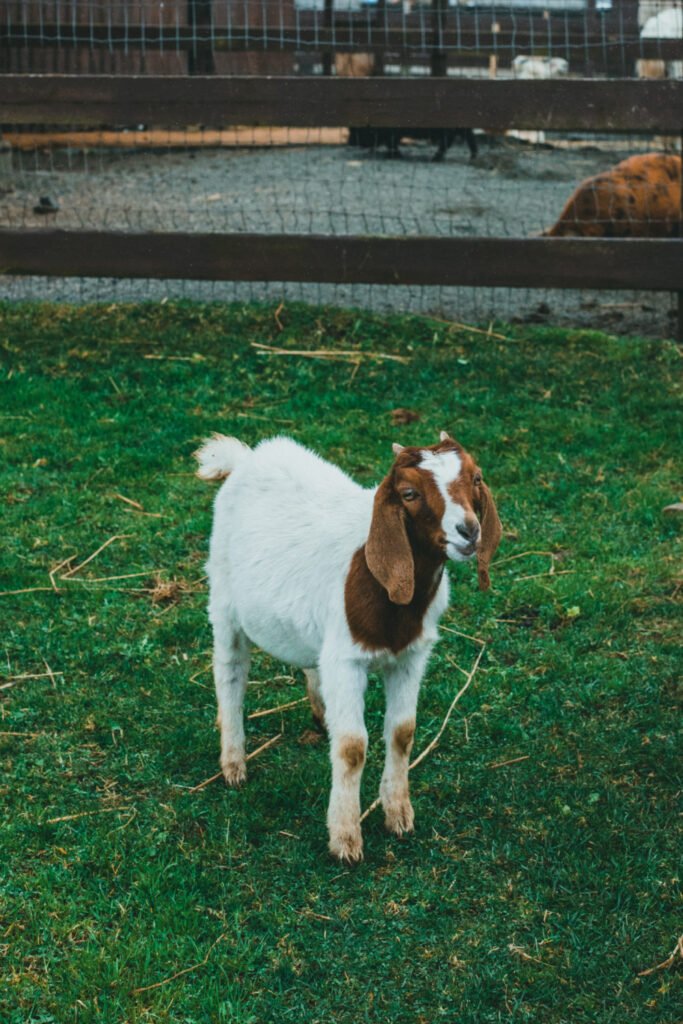
Boer is a fairly new breed to the US. Brought to North America in 1994. Boer goats originated in South Africa. Afrikaner farmers crossbred different European and Indian breeds with breeds that were raised by Bantu and Kloekhoe people.
Boer goats are said to have fast growth rates and are disease resistant
Adult male Boers can reach up to 350 pounds and females can reach 250. Boers are known to gain and grow quickly.
Spanish Goats were brought by Spanish settlers to Mexico and the Caribbean shores in the 1500s. By the 1540s Spanish settlers migrated up through Mexico into Texas, Florida, Mississippi, Alabama, and Georgia, and the goats were referred to as bush goats, scrub goats, or hill goats. They are known for meat and land clearing. They are considered hardy and able to withstand extreme weather with little management. In 1840 this was the only type of goat in the US.
Spanish goats are curious, wary but can be docile and kind if socialized and worked with. Weight can vary from 75-200 pounds.

Nubian is a great dual-purpose goat. Good for meat and excellent for milking. Many people like keeping Nubian does to milk and butcher wethers or bucks. Nubians are friendly and docile. They have long floppy ears and a Roman nose. They tend to kid easily and are great mothers.
Nubians are known to be bleaters, if they want something they will bleat. We have a Mini Nubian and that hasn’t been our experience but every goat is different.
Does height is around 30 inches and Bucks are around 35 inches tall. Nubian goats weigh around 130-175 pounds. Nubians grow rapidly which is one reason they were chosen as meat goats although now most people prefer them as a dairy goat.
Savanna Is a goat from South Africa. A well-muscled sturdy animal. They are fertile, mature early, breed all year long. Does kid with little to no assistance. Savanna’s are resistant to tick-borne illnesses and other goat parasites. They handle drought and heat well.
The Cillier family of North Cape province in South Africa is the family responsible for bringing the Savanna goats to North America. In 1957 Mrs. Cillier’s servants gifted her a white goat buck. She purchased five indigenous does of various breeds choosing ones that were white in color and bred them to the buck to get a hardy, muscular goat that was parasite and heat resistant. Savanna goats were brought to Canada in 1994 but only recently have they started to become more well known.
Does Average 132 to 200 pounds and bucks, 200-250 pounds or more. Height is around 19–25 inches.
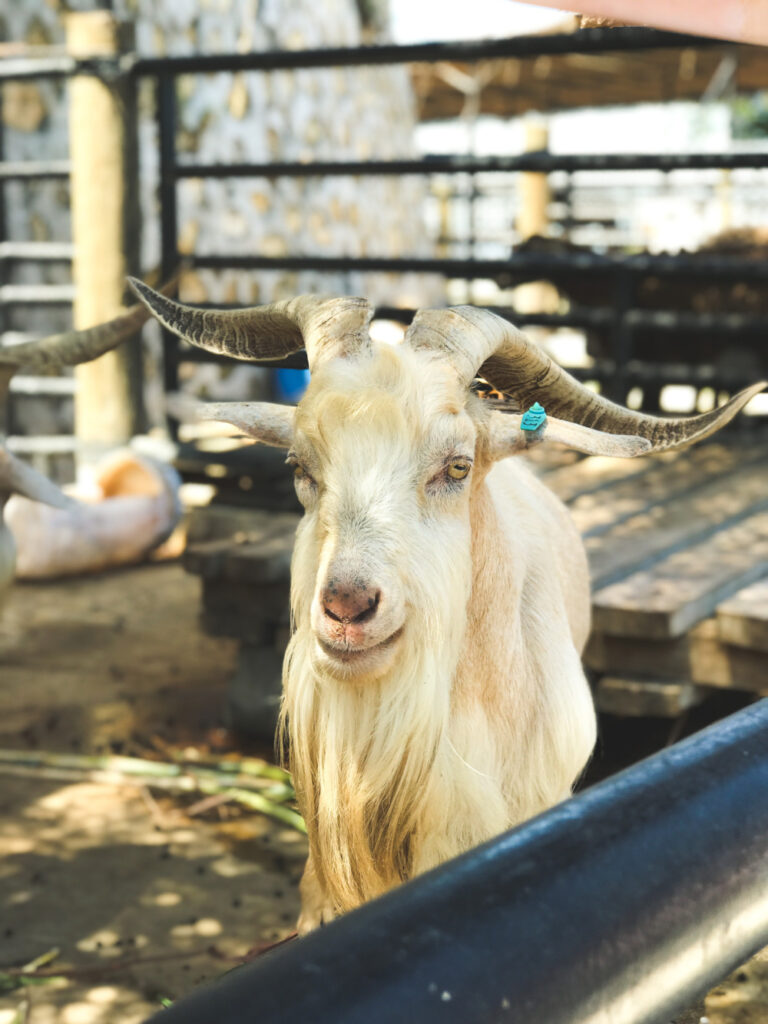
Kiko is a breed from New Zealand and is loved for its ability to grow fast and produce a good amount of meat. It is considered a hardy breed and can thrive under extreme conditions and is low maintenance.
Does weight around 130 and bucks average around 275. Kiko’s can breed year-round. Gestation is 155 days and does usually have twins or triplets and it’s said they are good mothers.
How to Decide What Goat Breed to Buy
For our family, we decided on Nigerian Dwarf goats and Mini Nubian. We knew we needed small goats because we don’t have much room and also the kids needed to be able to handle the goats themselves. Also because I have damage to my hands and wrists I can not wrangle a huge goat. Smaller is better for me as well.
We also liked these breeds because they are small enough to haul in an SUV or the back seat of a car in a dog crate if need be. So when picking out which breed to get you have to think how are you going to transport the goat if it needs to go to the vet? We do 4H with our goats and several times throughout the year we have to transport goats to different events.
Do you want to be able to have fresh goat’s milk? Are you going to be making cheese with the milk? Choosing a breed that has a higher milk butterfat percentage is better for cheese making. How much milk do you need a day to feed your family? This is also different for each breed.
Some dairy goats give 1/2 gallon a day while others give just a few cups. And for some families having a goat that only gives a few cups is ok because maybe they have 4 goats that are in milk. But that means they have to milk 4 goats and that might be a little bit cumbersome. So choosing a breed that provides more milk might be a better choice. These are the things you have to factor in.
If you are choosing meat goats for your farm. How fast do you want them to grow? What is your climate like and is the breed you’re looking at getting good for that climate?
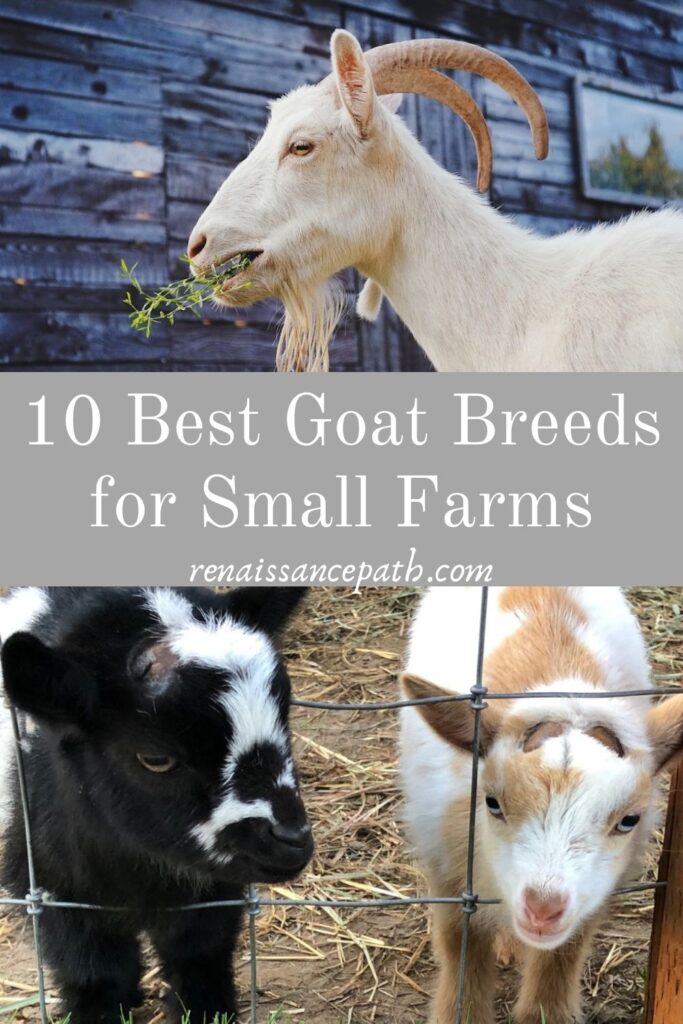
Additional Resources
The American Goat Federation-Meat, Dairy, and Fiber
American Dairy Breed Association
Final Thoughts
You really can’t go wrong with any goat. They are all great. Just remember they are a herd animal and they always need to have a friend. So you can’t just have one goat, they need a friend.
PS-If you are considering sheep for your small farm or homestead you should read my blog post about Soay Sheep.
Let me know in the comments, do you have goats? What is your favorite breed?
Much Love,
Melissa
Leave a Reply